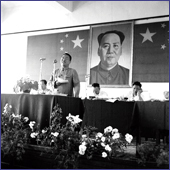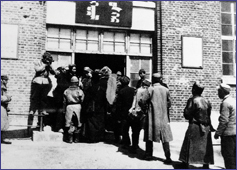
In 1954, Fei Xiaotong made legal explanations at the fourth session of Central Government's Ethnic Affairs Commission Conference. (The name of Central Government's Ethnic Affairs Commission has been changed to State Ethnic Affairs Commission since 1978) [Photo by Li Zhongkui]
|

On April 23rd 1947, Inner Mongolia People's Congress opened in Wangye Temple. The delegates filed into the conference hall. [Photo by Cheng Weidong]
|



